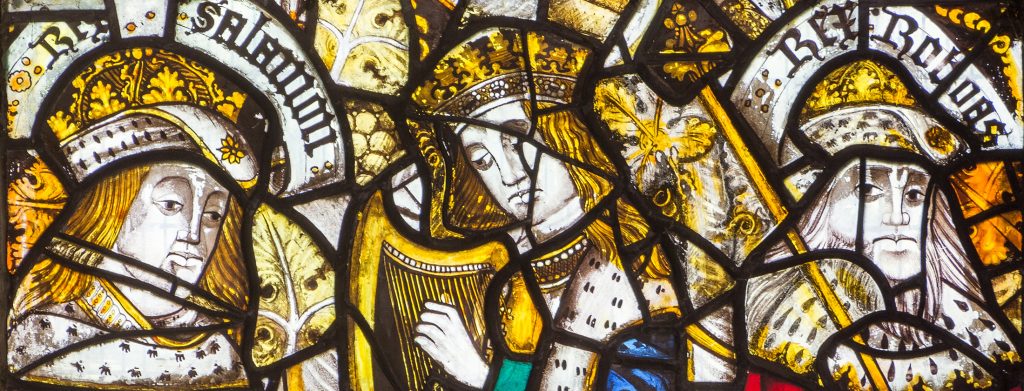
Stained Glass in Wales
Stained glass provides colour and character for all kinds of buildings in all kinds of communities. Stained glass is perhaps most familiar to us in churches, and examples in Welsh churches date back to the fourteenth century. Stained glass windows are usually admired for their aesthetic qualities, but were also commissioned to commemorate, celebrate, memorialise and educate, while transforming architectural interiors with textured light and colour. Artists working with glass continue to make new windows for a range of public and private spaces using traditional medieval methods and new techniques developed in the second half of the twentieth century.
The importance of medieval stained glass has often been recognised, but the many thousands of nineteenth- and twentieth-century stained glass windows have often been overlooked. These windows tell the story of a thriving British industry that made stained glass for buildings all around the world, and left their imprint on the public imagination.
This site provides an introduction to the detailed research on stained glass in Wales that has been undertaken by Martin Crampin at the University of Wales Centre for Advanced Welsh and Celtic Studies since 2005. This has resulted in a growing number of online resources and printed publications.
The research has been undertaken in the context of increasing threats to the medium. Almost uniquely among works of art, stained glass windows are also usually required to keep out the wind and rain, and need to remain structurally intact in order to survive. Stained glass requires periodic maintenance, and sometimes urgent conservation, stretching the resources available locally and requiring grant funding. The continued existence of hundreds of windows is increasingly endangered, particularly in places of worship, as buildings are redeveloped and sometimes demolished. The closure of churches and chapels has precipitated the loss of stained glass and an acceleration of these closures is underway.
Better appreciation of the artistic and heritage value of stained glass can also assist efforts to keep churches open for community use and attract visitors interested in art, history and faith tourism. Some stained glass windows were designed by significant artists of their time, a few of whom are still well-known today, but the vast corpus of nineteenth- and twentieth-century stained glass also represents the work of hundreds of less well-known artists and craftspeople who deserve to be celebrated for their rich artistic legacy.
